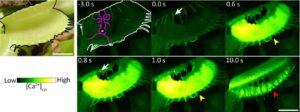
The ancient quest to transform base metals into gold, known as alchemy, is experiencing a modern-day revival. Researchers are exploring the possibility of synthesizing gold using nuclear power, a concept that has gained traction in recent years due to advancements in nuclear technology. This renewed interest raises questions about the feasibility of creating gold through chemical processes that have historically been deemed impossible.
At the forefront of this exploration is Marathon Fusion, which has proposed a plan to synthesize stable gold from the abundant isotope of mercury, known as mercury-198. This process, referred to as transmutation, involves altering the nucleus of an element to transform it into another element. According to a report by Gizmodo, Marathon’s method entails introducing mercury-198 into a fusion reactor and bombarding it with neutrons until it converts into mercury-197. The latter is an unstable isotope that decays into gold-197, the only stable isotope of gold.
The entire transformation process reportedly takes about 64 hours. Marathon’s research indicates that it could be possible to produce as much as five metric tons of gold annually for every gigawatt of power generated. In comparison, the current global production of gold is approximately 3,500 metric tons per year, suggesting that successful implementation of this technology could significantly alter the gold market.
Despite the ambitious claims, skepticism surrounds the practicality of this project. The essential component for gold production is the fusion reactor. While experimental fusion reactors have been developed, they have yet to reach a stage where they can operate commercially and efficiently. As highlighted by The Atlantic, Marathon envisions using the potential profits from gold sales to help offset the costs associated with nuclear power, but the technological hurdles remain significant.
Fusion reactors require immense energy to function, and researchers are still working to achieve a point where these plants generate more energy than they consume. The challenges of managing high-energy plasma within complex reactor systems complicate the scaling of this operation.
Moreover, the nature of the gold produced through this nuclear process may pose additional complications. According to Futurism, any gold synthesized from mercury could be slightly radioactive. This means that it might require a storage period of 14 to 18 years to ensure it is safe for handling, further complicating mass production.
Despite these challenges, some scientists remain optimistic about the potential of this modern alchemy. Dr. Ahmed Diallo, a plasma physicist at the U.S. Department of Energy’s national laboratory at Princeton University, expressed intrigue about Marathon’s proposal, stating that on paper, the concept appears promising. Dan Brunner, a former chief technology officer at Commonwealth Fusion Systems and an adviser to Marathon, echoed this sentiment, noting that the scientific foundations seem solid, though engineering the process into a practical system presents significant challenges.
As research continues and the field of nuclear technology advances, the dream of turning base metals into gold may not be as far-fetched as it once seemed. However, whether this modern alchemy will materialize into a commercially viable reality remains to be seen.






